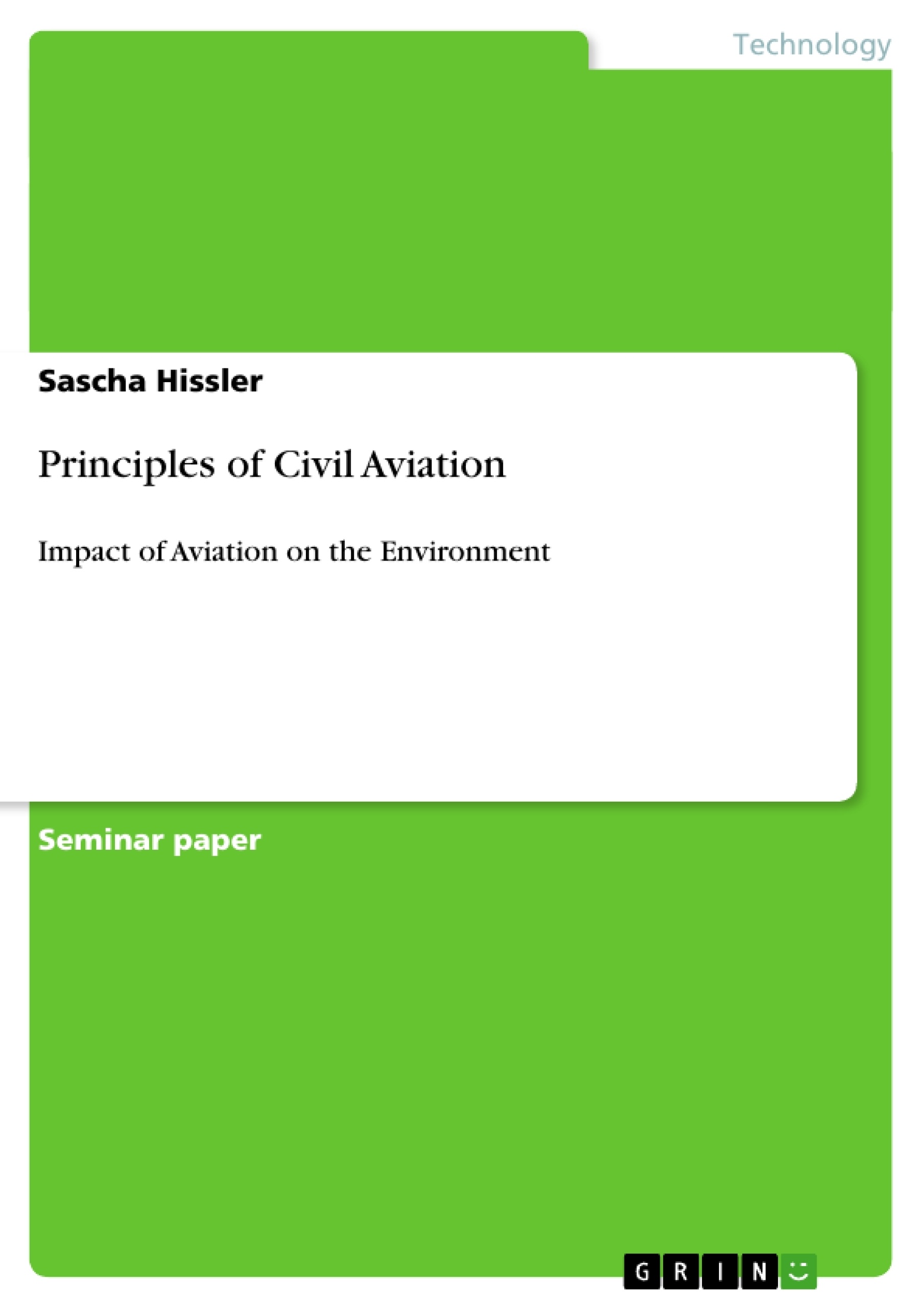Excerpt
Contents
Glossary
Introduction
Noise pollution
Effects of noise on humans
Influence on the atmosphere
Impact of aviation on climate change
Sources
Glossary
illustration not visible in this excerpt
Introduction
Mobility has become a key factor in people's lives - privately as well as professionally. Flying connects people and brings the world together. Within 24 hours you are able to be at the further end of the world in countries like New Zealand - where nearly nobody out of Europe would travel if not by an airplane. At the same time, the air transport industry is of vital economic significance – as an employer, trading partner and driver of economic growth in the respective regions. Alongside these social and economic achievements, for several years now the focus has increasingly been placed on a third component: the responsibility towards the natural world and the environment.
This paper tries to concentrate on the main influences of aviation on the environment such as noise pollution and its effects on humans as well as the growing impact of aviation on the atmosphere and on climate change itself.
Aviation has a number of environmental impacts that are experienced by local residents in the vicinity of airports and under flight paths. Noise has been the focus of concern over all the years of growth in aviation and more recently air pollution and the health effects of air pollution from aircraft have begun to cause concern. The following chapter will inform about these issues.
Noise pollution
If you are living in the vicinity of an airport, the first thing you are asked by visitors is, if you can „hear“ the airport or -even worse- if you are living in the departure or approach-sector of the airport - because nearly no one likes it. Noise damages health, it detracts significantly from the quality of life, it stops local residents enjoying their gardens or simply enjoying peace and quiet, it damages wildlife, it damages the learning ability of schoolchildren and it costs a great deal of money if you are affected by noise and by this the costs of noise mitigation and noise abatement. Aircraft noise is a serious concern around all airports and under flight paths notwithstanding the adoption of quieter aircraft and engine technology. Aircraft noise is a controversial matter. It is frequently asserted by the aviation industry that the number of people exposed to noise problems, the so-called noise footprint, is shrinking rapidly. Almost every aspect of aircraft noise is the subject of disagreement. The selection of a particular measure of noise can influence the extent to which noise is recognized as a problem. Measures that average values over long time periods can show low relatively levels of noise and measures that emphasise peak events can show serious noise problems - like communication difficulties, sleep disturbance or discomfort.
Aircraft noise, which has low frequency components or is accompanied by vibration, is often perceived as more annoying than other noise.[1] However, the number of people highly annoyed by aircraft noise in the EU cannot be estimated accurately, because much annoyance is caused by noise levels of 45-55 dB(A) for which there is a lack of information. An earlier assessment suggest that some 10 % of the total EU population may be highly annoyed by air transport noise.[2]
Excursus:
Noise is measured on the Decibel "A" Scale usually expressed as dB(A). The scale is used by public health and environmental health officials to set limits or make recommendations about limits that should not be exceeded. A limit of 55dB(A) is regarded as one which should not be exceeded to protect undisturbed sleep, and sound levels above 70dB(A) make normal speech communication impossible.[3] The following table shows different sound levels - with the noise pollution of jet engines on top:[4]
illustration not visible in this excerpt
[...]
[1] WHO, 1999.
[2] INRETS, 1994.
[3] http://www.eea.europa.eu/themes/noise/about-noise
[4] Source: http://noiselimiters.co.uk/buy/images/slvls.jpg
- Quote paper
- Diplom-Staatswissenschaftler (univ.) Sascha Hissler (Author), 2009, Principles of Civil Aviation, Munich, GRIN Verlag, https://www.grin.com/document/132893
Publish now - it's free






















Comments